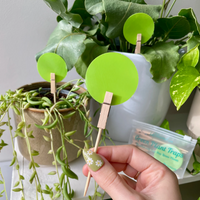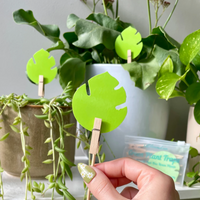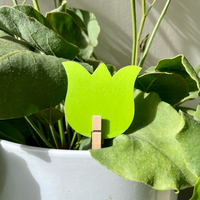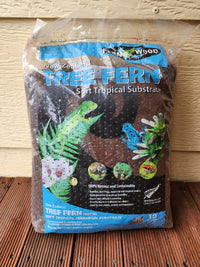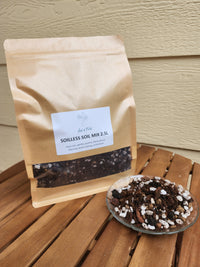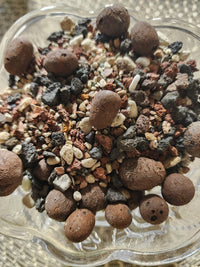Discover the world of lightweight expanded clay aggregates (LECA) and transform your houseplants into thriving, aesthetically pleasing wonders. LECA are small clay porous balls that have been baked. These small marble-sized wonders not only enhance the visual appeal of your indoor garden but also simplify indoor plants maintenance. Unravel the benefits and drawbacks of adopting LECA for your houseplants in this comprehensive guide, designed to elevate your gardening experience.

Elevating Aesthetics and Simplifying Maintenance
LECA has gained popularity in the last couple of years as a stylish alternative to traditional soil, adding a decorative touch to houseplants. Beyond aesthetics, these clay balls offer a hassle-free, low-maintenance way to maintain your indoor plants by providing optimal oxygen and efficient water absorption. While not nutrient-rich like soil, LECA comes with unique advantages that may outweigh the initial setup.
Root Rot Prevention
Root rot stands as a constant challenge for houseplant enthusiasts, often surfacing due to the delicate balance between providing adequate hydration and avoiding overwatering. Fortunately, the adoption of LECA as a growing medium presents a transformative solution to this common issue. Unlike conventional soil, which often leaves plant owners second-guessing their watering habits, LECA streamlines the process and significantly mitigates the risk of root rot. The ingenious design of these porous clay balls revolutionises the way plants interact with water. By facilitating efficient water absorption from the bottom up, LECA ensures that your cherished green companions precisely receive the right amount of hydration, safeguarding them against the perils of drowning roots. This not only simplifies the watering routine but also acts as a protective shield, allowing your houseplants to flourish.
Pest Resistance
Delving into the realm of LECA, one discovers an added layer of defence against the persistent challenges posed by common pests. The adoption of LECA creates a fortified, pest-resistant environment, creating hurdles for nuisances such as aphids and fungus gnats to establish thriving colonies. The inherent properties of LECA, characterised by its porous and airy structure, create an inhospitable terrain for pests seeking damp, compacted environments.
To maintain this pest resistance attribution to LECA, a regular cleaning routine is required to maintain a thriving houseplant. By keeping your growing medium clean, algae free, removing debris or plant matter, and ensuring the surface remains free from potential pest breeding grounds. You will elevate the overall health of your indoor plants and will reinforce their natural defences.
Reduced Weekly Maintenance
LECA facilitates easy monitoring of your houseplant's health by allowing quick root checks. Along with quick root checks, bid farewell to frequent aeration and messy repotting with LECA. The ample space between the clay pellets ensures efficient oxygen circulation. Additionally, repotting with LECA becomes a breeze, eliminating the mess associated with traditional soil changes.

Drawbacks and Considerations
1. Algae Buildup
While LECA minimises the need for pest control, it requires vigilant management of algae buildup, especially in clear glass containers. This algae buildup will require regular cleaning. This issue can be easily managed by putting your vessel in a dark plastic container/pot, ceramic pot or even putting some sort of material over your glass container such as a sock or something similar. This will stop the sunlight from hitting the growing media and the glass container causing the algae.
2. Increased Fertilisation Requirements
As these clay balls lack the inherent nutrients that are found in your normal soil. Your houseplant will require constant fertilisation. Ensure that you choose a specialised hydroponic fertiliser to provide your plants with the essential micro-nutrients they require for optimal growth. For established houseplants, Growth Technology Foliage Focus is the perfect fertiliser for this. If it’s a small cutting that is still in the propagation process, Growth Technology’s Clonex Clone Solution is your go to product. In conjunction with these products, you can use Growth Technology’s Rootzone, which acts as a booster.
Initial Setup Effort
Transitioning your indoor plant to LECA requires additional upfront effort compared to your traditional soil. Properly preparing both your plant and clay balls are essential. Your soil potted houseplant will require its roots to be completely cleaned from any soil, to give it the best chance possible for a successful transition. While the preparation of your LECA ball will require a good rinse ensuring that your clay balls are dust free (ensure that this is not done over your kitchen sink, as the dust of the clay balls could easily clog your pipes). The unused LECA balls will also require an overnight soak, preferable in the nutrient solution that will be used to ensure that they are well prepped for the optimal water absorption and optimal growth.
Initial Cost
LECA comes with its initial costs, including the purchase of the clay aggregates, fertiliser and in some cases depending on the water you are using, a pH testing kit. However, once you have these initial purchases, you are able to transition many of your houseplants into LECA.
Despite the initial cost and the initial effort to transition your houseplants from soil to LECA, you will be pleased with the long-term result. Also, you can transition your indoor plants slowly, so it is not an overwhelming task. Once you discover the unique benefits, simplified maintenance and the aesthetic appeal of LECA, there’s no turning back. The semi-hydro indoor plants are the way of the future.
Check out our online shop for all your peace lily needs!
Happy Planting!!


